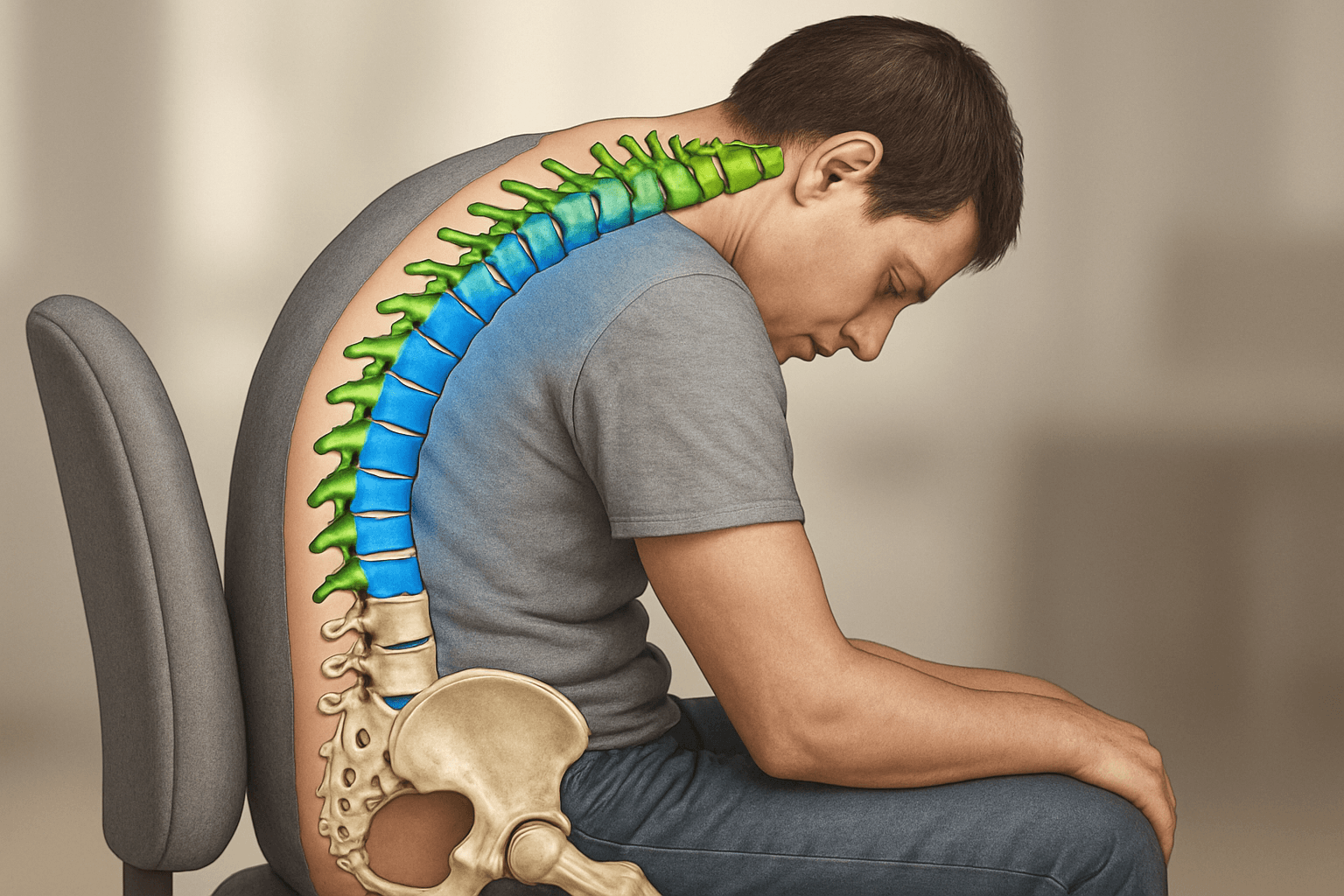If you’ve ever wrapped up a long workday with back pain, tight shoulders, or a stiff neck, your body may be trying to tell you something—your office chair could be making you sick.
With many people now spending 8–12 hours a day sitting, poor work ergonomics have become a silent health epidemic. Slouched posture, poor lumbar support, and misaligned screens are leading to more than just discomfort—they’re causing long-term structural damage, reduced mobility, and even systemic fatigue.
If your workspace isn’t supporting your body properly, you’re not just losing productivity—you’re risking your long-term health.
Jump To:
TLDR – Quick Guide
- Poor work ergonomics can cause spinal misalignment, nerve compression, and posture collapse.
- Symptoms include chronic back and neck pain, headaches, fatigue, and reduced focus.
- Common culprits: low-quality chairs, soft or molded seats, and poor screen height.
- Proper ergonomic setup and posture correction can prevent long-term damage.
- Advanced chiropractic methods like ABC™ can help reverse structural imbalances caused by bad work habits.
The Hidden Health Costs of Poor Work Ergonomics
You may not feel it after the first few days, but over time, the effects of bad posture and poor sitting habits compound into serious issues.
- Back & Neck Pain: A slouched spine puts constant strain on spinal discs, leading to inflammation and misalignment.
- Compressed Nerves: Incorrect posture can pinch nerves in the neck, shoulders, or lower back, leading to tingling, numbness, or shooting pain.
- Postural Collapse: Over time, your body adapts to poor positions, resulting in forward head posture, rounded shoulders, and anterior pelvic tilt.
- Reduced Lung Function & Circulation: Slouching compresses the ribcage, limiting breathing capacity and blood flow.
- Mental Fatigue: Physical discomfort increases stress on the nervous system, draining your energy and focus.
Signs Your Office Chair Is Failing You
- You lean forward to see your screen or keyboard.
- Your back doesn’t touch the chair unless you slouch.
- You experience pain or stiffness after working.
- Your shoulders creep up toward your ears as the day goes on.
- Your hips feel tight or your legs go numb after sitting.
Even “ergonomic” chairs can be misleading if they aren’t set up or used properly. The issue is rarely just the chair—it’s how your entire workstation supports (or doesn’t support) your body’s natural alignment.
What You Can Do Today
- Reset Your Workspace Ergonomics
- Your screen should be at eye level.
- Feet should rest flat on the floor or footrest.
- Knees should be at or slightly below hip level.
- Your chair should support the natural S-curve of your spine.
- Your screen should be at eye level.
- Incorporate Movement Breaks
- Stand up every 30–60 minutes.
- Stretch your shoulders, neck, and hip flexors.
- Walk briefly or use a standing desk if possible.
- Stand up every 30–60 minutes.
- Upgrade Your Posture, Not Just Your Chair
A properly adjusted chair helps, but the key lies in postural correction. Poor ergonomics distort spinal structure, and unless you correct the underlying alignment, symptoms will return—no matter how “supportive” your chair is. - Seek Advanced Structural Correction
Techniques like Advanced BioStructural Correction™ (ABC) can reverse years of spinal distortion. Unlike standard chiropractic care, ABC targets the core misalignments that traditional approaches miss, allowing your body to return to its natural upright posture.
Key Takeaways
- Prolonged sitting with poor posture leads to chronic pain and long-term health issues.
- An unsupportive office chair and workstation setup are key drivers of poor work ergonomics.
- Symptoms include spinal misalignment, compressed nerves, fatigue, and reduced focus.
- Optimizing your desk setup and investing in postural correction therapies can prevent and reverse damage.
- ABC™ treatment offers a long-term solution by addressing the root cause of postural collapse.
FAQs
1. Can poor ergonomics really make me sick?
Yes. Chronic poor posture and misalignment can cause nerve pain, fatigue, reduced lung function, and even digestive issues. It affects more than just your muscles.
2. Is it enough to just buy an ergonomic chair?
Not necessarily. Even the best chair won’t help if your posture is already compromised. You also need to address structural imbalances and how your workstation is arranged.
3. How can I tell if my posture is misaligned?
Common signs include forward head posture, rounded shoulders, uneven hips, chronic pain, and poor balance. A postural assessment can confirm it.
4. What makes ABC different from other chiropractic treatments?
ABC corrects misalignments that the body can’t fix on its own. It restores natural posture by removing structural twists and compressions from the spine—something standard chiropractic often overlooks.
5. Can posture correction improve my energy levels?
Absolutely. When your spine is aligned, your nervous system functions better, your muscles work more efficiently, and oxygen flow improves—leading to better focus and energy.






